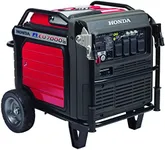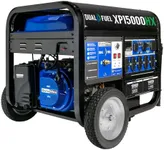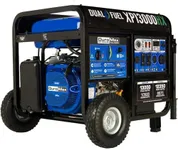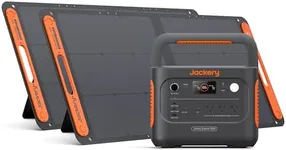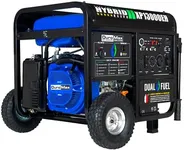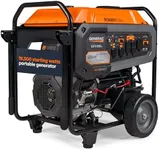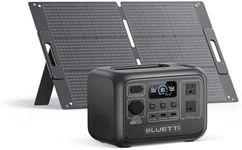Buying Guide for the Best Portable Generators
Choosing a portable generator can seem overwhelming, but the most important thing to remember is to match the generator's abilities to how you plan to use it. Consider where, when, and how often you’ll use the generator—whether it’s for backup power during outages, for camping, for powering tools at a job site, or for outdoor events. Portable generators come with a wide range of features and specifications, so understanding your unique needs will help you pick a model that is reliable, safe, and convenient for you.Wattage (Power Output)Wattage, or power output, measures how much electricity the generator can deliver. This is important because it determines what devices or appliances you can run at the same time. Portable generators are typically separated into three segments: small (under 2,000 watts), medium (about 2,000 to 5,000 watts), and large (over 5,000 watts). If you just want to charge phones, run a few lights, or power a laptop when camping, a smaller unit is sufficient. For powering refrigerators, sump pumps, or multiple appliances during a blackout, look for something in the medium to large range. Make a list of what you need to power at once, check the wattage requirements for each, and make sure the generator’s running and surge (peak) watts cover your needs.
RuntimeRuntime tells you how long the generator can operate on a full tank of fuel at a specific load (usually 25% or 50% of its capacity). This is critical if you need power over longer periods without frequent refueling. Generators with longer runtimes are convenient for overnight use or during extended power outages. When reviewing runtimes, think about how long you realistically need your equipment to run before you can refill the tank. If you're using it for short stints, a shorter runtime is fine, but for prolonged use, longer endurance is better.
PortabilityPortability considers weight, handle design, and whether the unit has wheels. Smaller and lighter generators are easier to move from place to place, making them suitable for camping or events. Heavier models with wheels and handles are designed to make moving the generator manageable even for one person. If you’ll be transporting the generator frequently or lifting it by yourself, prioritize lighter models with good handles. For use at a job site or as a semi-permanent backup at home, portability may not matter as much.
Noise LevelNoise level is measured in decibels (dB), showing how loud the generator will be when running. This is a big concern for camping, neighborhood use, or areas with noise restrictions. Generators typically range from very quiet (under 60 dB, about as loud as normal conversation) to quite loud (over 70 dB, similar to a vacuum cleaner or lawnmower). Choose a quieter generator if you’ll use it in close quarters or want minimal disturbance, whereas at a noisy job site, noise may be less important.
Fuel Type & Tank CapacityFuel type determines what kind of fuel the generator uses—typically gasoline, propane, or both (dual-fuel). Gasoline is the most common, but dual-fuel generators offer flexibility, especially useful during emergencies. Tank capacity tells you how much fuel the generator can store, affecting how often you need to refill it. Pick a fuel type that is easy for you to store and access. A larger tank is handy for longer runtime and less frequent refueling, especially in situations where frequent checking is inconvenient.
Outlets and Power ConnectionsOutlets and power connections define how many and what types of devices you can plug in at once. Common options include standard household (120V), twist-lock, USB ports, and sometimes 240V outlets for larger appliances. Check what you need to plug in—if you have many appliances or require something like an RV plug, make sure the generator comes with those connections. More outlets mean more flexibility, but make sure you still stay within the generator’s total wattage output.
Safety FeaturesSafety features like automatic shutoff for low oil, carbon monoxide sensors, overload protection, and grounding options protect both you and your equipment. For home or populated area use, especially inside garages or near tents, a CO shutoff can be a lifesaver. Overload protection keeps your devices from getting damaged by surges. When deciding, consider where and how the generator will be used, and look for features that match those safety needs.
